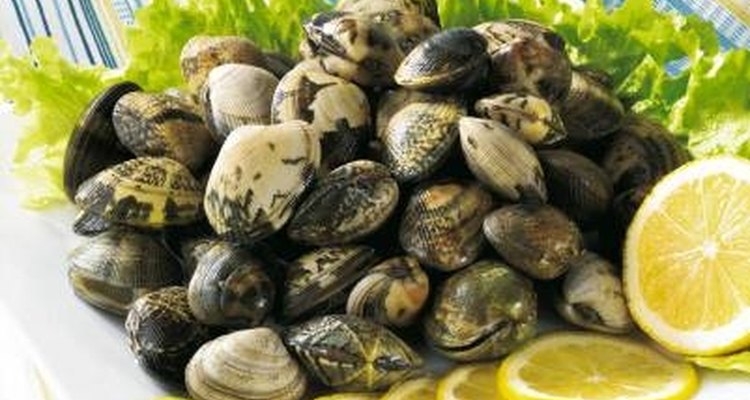
Clams are the underrated relative of oysters, and many people shy away from them. This is unfortunate because they come in many shapes and sizes, and they are flavorful enough to appeal to virtually anyone who enjoys shellfish. Whether eating them raw, in a stew or as an addition to a pasta sauce, clams are an interesting addition to any meal. If you know a few things about these delicacies, you can buy and eat them with confidence.
Know what kind of clam you are looking for. There are many different types of clams available all over the world, but soft-shell clams and hard-shell clams compose the two basic groups. How you plan to use the clams will determine which type you should purchase. Despite their description, soft-shell clams do not have an especially soft shell, but their flavor and shape is different from hard-shell clams. They tend to be more oblong than the rounded, darker hard-shell variety. Soft-shell clams make better steamers and can be eaten raw, although most "raw bars" serve hard-shell clams. Hard-shells are preferred for stews and chowders.
Pick closed clams when purchasing soft-shells. If you find one that isn't closed, tap it gently and watch for 30 seconds to a minute. If the shell doesn't close, discard it; the clam is dead and inedible. Many soft-shell clams also have protrusions, or tails, sticking out from inside the shells. They are safe to use.
Look for Cherrystone or Little Neck clams if you plan to eat your hard-shell clams raw. To cook them in a soup, use a larger chowder clam like the Longneck clam. Calculate about 450 grams per person when buying clams because the shells weigh much more than the meat.
Buy clams at your local fish market. If there isn't a fish market in your area, try purchasing clams a grocery store. The average price per pound will be somewhere around $4 to $10, depending on the variety. You can also order clams online (see Resources), but there's never any guarantee of what you will get.
If you buy frozen clams, keep them on hand for up to three months. These clams have been shucked, which means they no longer have their shells. Frozen clams may be fresher than so-called "fresh" clams because the frozen versions are often put on ice the same day they're caught to lock in freshness. With "fresh" clams, you have no guarantee how long they've been out of the ocean.
Try cockles. This small member of the clam family has a distinctive heart shape and you can tell if the cockles are alive the same way you would any clam. The shell should be closed when you buy them and they should open up after being steamed; otherwise they are dead. Cockles taste wonderful in an Italian clam sauce. Clean cockles as you would a hard-shell clam, and sauté them with olive oil, shallots and a cup of white wine over medium heat. Cover the pan and let them steam for five minutes. Toss with pasta. You can finish the dish with a handful of flat-leaf parsley and a dab of butter. Include a good crusty bread to soak up the cockle juice.
Related Articles
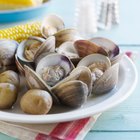
Types of Edible Clams

How to Steam Littleneck Clams

What Is the Difference Between ...

How to Cook Mussels & Clams Together
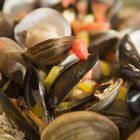
How to Make Sure Cooked Clams Have No ...
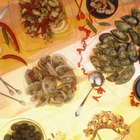
How to Clean Soft-Shell Clams (Steamers)
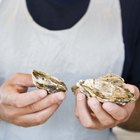
How to Cook Fresh Oysters to Make Stew
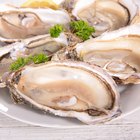
How to Cook Oysters on the Stove
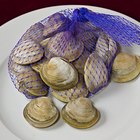
How to Make Fresh Clam Sauce
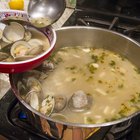
How to Cook a Pot of Steamers

How to Cook Clams in the Shell
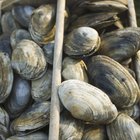
How Long Do Clams Last Unrefrigerated?
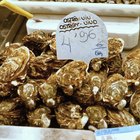
The Best Method to Store Fresh Oysters
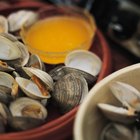
How to Cook Littleneck Clams
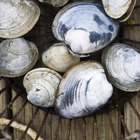
How to Steam a Quahog
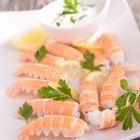
How to Cook Langoustines

What Kind of Seafood Is High in Iron?

How to Prepare Raw Oysters

How to Cook Pismo Clams
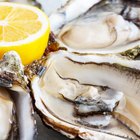
How Long Does It Take for ...
References
Resources
Tips
- Soft-shell clams often carry more sand than hard-shells, so rinse them thoroughly. Afterward, soak the clams in a bucket of saltwater for one hour to clean off any additional sand. A quick rinse before preparing usually is enough to clean a hard-shell clam. Clams should be eaten within one day of purchase to ensure they are still fresh. Summer clams are susceptible to bacteria, so winter clams rate as the healthier choice. It's harder to dig for clams during the winter though, so that makes them more expensive.
Warnings
- Never eat clams you find on a beach. These bivalves can be highly toxic and potentially deadly in the worst case scenario. If you harvest your own clams, beware of Paralytic Shellfish Poisoning (PSP), which you will get if you eat a clam that has ingested marine biotoxin. When buying clams, the canned version is also an option, but it may contain lower quality clams. As with all canned products, check the product date. Do not buy anything that is open, rusty, cracked, dented or swollen.
Writer Bio
This article was written by the CareerTrend team, copy edited and fact checked through a multi-point auditing system, in efforts to ensure our readers only receive the best information. To submit your questions or ideas, or to simply learn more about CareerTrend, contact us [here](http://careertrend.com/about-us).
Photo Credits
Photo courtesy of iStock.com